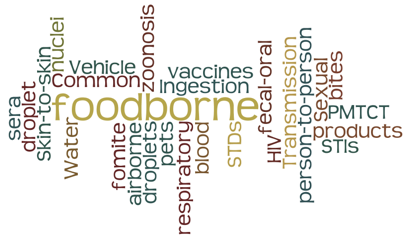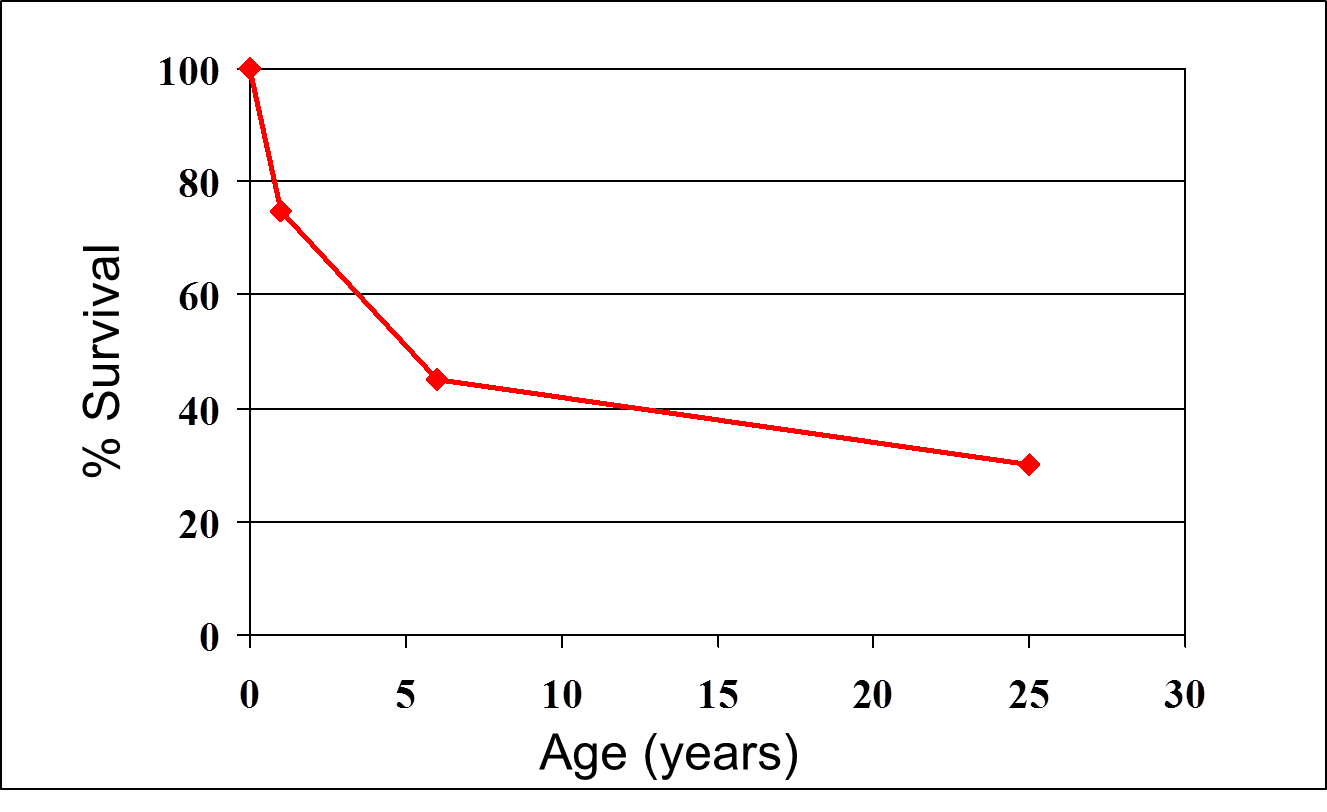
Introduction
 A century ago infectious diseases were by far the leading cause of death throughout the world. The graph on the right shows estimated survival among people born in the United Kingdom in the mid 1800s. Approximately 70% died before the age of 25, and the vast majority of deaths occurred among infants and children as a result of infectious disease. The emergence of "The Sanitary Idea" and the evolution of public health in the United Kingdom in the mid-1800s, the risk of infectious disease declined progressively. At present atherosclerotic heart disease and cerebrovascular disease (stroke) remain the leading causes of death worldwide, but as the table below shows, infectious diseases still remain important causes of death. Perhaps more importantly, infectious diseases remain the #1 cause of premature death throughout the world because of a particularly heavy toll in infants and children. It is estimated that 17 million people die prematurely each year, and 9 million of these are children. It is further estimated that this translates into approximately 50,000 preventable deaths per day.
A century ago infectious diseases were by far the leading cause of death throughout the world. The graph on the right shows estimated survival among people born in the United Kingdom in the mid 1800s. Approximately 70% died before the age of 25, and the vast majority of deaths occurred among infants and children as a result of infectious disease. The emergence of "The Sanitary Idea" and the evolution of public health in the United Kingdom in the mid-1800s, the risk of infectious disease declined progressively. At present atherosclerotic heart disease and cerebrovascular disease (stroke) remain the leading causes of death worldwide, but as the table below shows, infectious diseases still remain important causes of death. Perhaps more importantly, infectious diseases remain the #1 cause of premature death throughout the world because of a particularly heavy toll in infants and children. It is estimated that 17 million people die prematurely each year, and 9 million of these are children. It is further estimated that this translates into approximately 50,000 preventable deaths per day.

Public health measures have accounted for the vast majority of reductions in deaths from infectious disease through better sanitation, cleaner water, and the development of vaccines. A key to this success has been an increasingly refined understanding of the mechanisms by which infectious agents are transmitted. An understanding of mechanisms of transmission provides opportunities for simple, effective measures that will prevent disease. Moreover, an understanding of mechanisms of disease transmission is likely to provide the greatest opportunities for further reductions in premature deaths, particularly in the developing world.
Learning Objectives
After successfully completing this section, the student will be able to:
- Identify and explain the mechanisms by which infectious diseases may be transmitted to and among humans. Be able to give examples of each.
- Discuss the various mechanisms by which infectious disease can be transmitted.
- Describe steps that can be taken to prevent foodborne illness.
- Discuss the importance of hand washing in preventing disease transmission.
- Give examples of vectorborne transmission of disease.
- Describe steps that might be taken to prevent malaria.
- Discuss airborne transmission of disease, distinguishing between droplet spread versus droplet nuclei; give examples of each of these two types of airborne spread.
- Define "zoonosis" and give examples.
|
|



